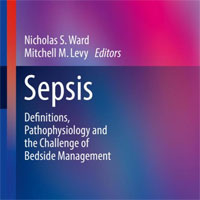Tag: resuscitation
Early Goal-directed Therapy Using a Physiological Holistic View
If peripheral perfusion-targeted resuscitation improves 28-day mortality, this could lead to simplified algorithms, assessing almost in real-time the reperfusion process, and pursuing more physiologically sound objectives.... read more
Resuscitation Guided by Volume Responsiveness Does Not Reduce Mortality in Sepsis
The results of this systematic review and meta-analysis indicate that a volume responsiveness (VR) guided resuscitation strategy in sepsis patients confers no mortality benefit compared with usual care. The methods of... read more
Sex-specific Differences in Survival After Out-of-hospital Cardiac Arrest
This nationwide, population-based observational study in Japan included 386,535 adult patients aged ≥ 18 years with out-of-hospital cardiac arrest (OHCA). In all these patients, resuscitation was attempted by EMS personnel... read more
A Multidisciplinary Idea to STEP UP Resuscitation Effectiveness
Non-technical skills and human factors are increasingly recognized as critical ingredients in the success or failure of acute care delivery in a number of high stakes clinical domains. This is reflected in the evolution of... read more
Fluid Resuscitation with PPD Attenuates Crush Injury-related AKI and Improves Survival
In-hospital renal replacement therapy (RRT) is widely used for the treatments of acute kidney injury (AKI) in crush injury (CI) victims. This study was designed to investigate whether preventive peritoneal dialysis (PPD)... read more
Metabolic sepsis resuscitation: the evidence behind Vitamin C
Sepsis resuscitation generally focuses on hemodynamics. Rivers of ink have been spilled writing about oxygen delivery and fluid responsiveness. This is clearly important, but it's possible that our focus on easily... read more
The association between intravenous fluid resuscitation and mortality in older emergency department patients with suspected infection
Recent studies suggest that hypotension thresholds in current guidelines might be too low for older patients due to arterial stiffening, possibly leading to insufficient fluid resuscitation. We compared intravenous (IV) fluid... read more
How to Deal with Severe Acute Pancreatitis in the Critically Ill
Management of severe acute pancreatitis (SAP) is multimodal with emphasis on monitoring, adequate fluid resuscitation, avoiding prophylactic use of antibiotics, cause-directed procedures or treatment, and organ support. There... read more
Study of the Effects of Epinephrine on Cerebral Oxygenation and Metabolism During Cardiac Arrest and Resuscitation by Hyperspectral Near-Infrared Spectroscopy
Epinephrine administration by bolus resulted in transient improvements in cerebral oxygenation and metabolism, whereas continuous epinephrine infusion did not, compared with placebo. Future studies are needed to evaluate... read more
Measuring Lactate vs. Capillary Refill in Guiding Resuscitation in Shock
Capillary refill is as least as good as measuring lactate in guiding resuscitation efforts in septic shock. Moreover, using a lactate-driven resuscitation strategy led to use of more pressors and more IV fluid administration... read more
Association of Age With Short-term and Long-term Mortality Among Patients Discharged From ICUs in France
Results of this study suggest that aging was associated with an increased risk of mortality in the 3 years after hospital discharge that included an ICU admission, with a sharp increase in those 80 years and older. However,... read more
Closed Chest Compressions in Traumatic Cardiac Arrest
This study demonstrated that fluid resuscitation with whole blood is significantly better than resuscitation with compressions alone or with normal saline. It further showed that there was no difference between whole blood... read more
Fluid Responsiveness in Sepsis
Fluid challenge is a common practice in the ICU. It is one of the most important resuscitation manoeuvres of acute circulatory failure management in critically ill patients. Adequate fluid resuscitation is very important... read more
Initial Arterial pH as a Predictor of Neurologic Outcome After Out-of-hospital Cardiac Arrest
Lower pH after out-of-hospital cardiac arrest (OHCA) has been associated with worsening neurologic outcome, with ... read more
Is Pre-hospital Coagulation Management in Trauma Feasible?
Coagulation management remains a formidable challenge in severely bleeding trauma patients. A strong rationale suggests starting treatment of trauma-induced coagulopathy in the pre-hospital phase. The burden of trauma is... read more
Characteristics, Management, and In-hospital Mortality Among Patients with Severe Sepsis in ICU in Japan
Sepsis is a leading cause of death and long-term disability in developed countries. A comprehensive report on the incidence, clinical characteristics, and evolving management of sepsis is important. Thus, this study aimed... read more
Lactate-Guided Resuscitation Only Encourages Over-Resuscitation and Downstream Harms
The Centers for Medicare and Medicaid Services and the Surviving Sepsis Campaign both rushed to offer guidance on the appropriate management strategies for patients presenting with septic shock. In both cases, a lactate-guided... read more
Outcomes of Critically Ill Patients Who Received Cardiopulmonary Resuscitation
Although overall survival of ICU patients was 15.9%, patients requiring pressors and who experienced a CPA in an ICU were half as likely to survive to discharge and to be discharged home than patients not taking pressors.... read more
The Great Debate Between Balanced and Unbalanced Crystalloids Continues
This meta-analysis contributes very little to the current discussion mainly because of the heterogeneity of included studies. The use of fluid type in different pathologies isn't really what we need, but rather tailored use... read more
The EXACT Protocol
The EXACT protocol: a multi-centre, single-blind, randomised, parallel-group, controlled trial to determine whether early oxygen titration improves survival to hospital discharge in adult OHCA patients. This study will determine... read more
No-Shitters, Boldface, and the Resus QRH
In an amazing lecture; Joe Novak, ED doc and former combat aviator; spoke about the need for memorized boldface actions and then the availability of a quick reference handbook (QRH) for the next steps. But where are either... read more
Resuscitation of Endotheliopathy and Bleeding in Thoracic Aortic Dissections
In this randomized, clinical pilot trial of patients undergoing emergency surgery for thoracic aorta dissections, we found that OctaplasLG reduced glycocalyx and endothelial injury, reduced bleeding, transfusions, use of... read more









